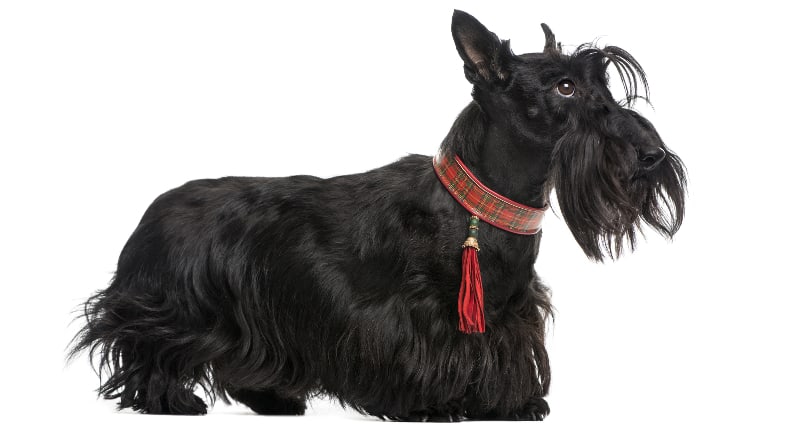
There are lots of well-known dog breeds, but how many are instantly recognizable by their silhouette? With its pointy ears, short stature, elongated nose and body, and big bushy beard, the Scottish Terrier (aka Scottie Dog) has an iconic shape that’s made its way onto everything from quilt patterns to licorice.
Most notable of all, the Scottie form has been traversing Monopoly boards since the 1930s as the most fought-over game piece in one of the most popular board games of all time.
No doubt about it – if you get a Scottie, you can expect to be stopped regularly by people admiring your dog. Many people know about the breed, but rarely see one in person. Thus, when people see a Scottie, curiosity often inspires them to strike up a conversation.
And there’s plenty to talk about. See, there’s more to these dogs than just their devastatingly handsome looks.
Scottish Terriers at a Glance
| Size | 18-22 pounds |
| Life Expectancy | 12-15 years |
| Overall Health | Good |
| Grooming Requirements | Medium – High, depending on style |
| Exercise Requirements | Medium |
| Barking Tendency | Medium |
| Digging Tendency | High |
| Good With Children? | Varies |
| Good With Other Dogs? | Varies |
| Prey Drive/Tendency to Chase | High |
| Overall Terrier-tude | A Wee Bit High |
Temperament
All dogs are different, making generalizations about breed personality dangerous. This is especially true of Scottish Terriers, who can be quirky and difficult to read.
Scotties tend to be more reserved than other terrier breeds, leading some people to label them as standoffish. In fact, some Scotties do reserve their affection for their family or a favorite person. However, others are outgoing and friendly, especially if they meet a lot of people early in life.
Scotties are sensitive and highly intelligent, but also hard-headed and often difficult to train. They can be bossy or downright confrontational with other dogs, and aren’t as tolerant of children as other dog breeds.
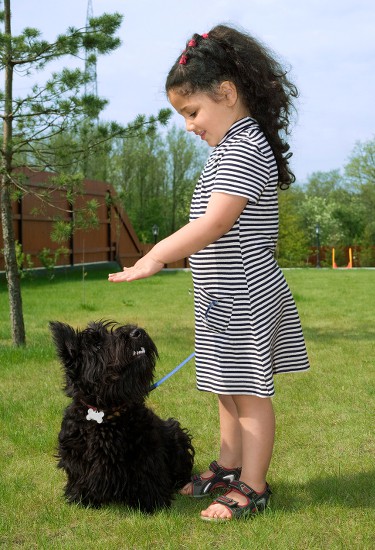
Despite some potential behavioral problems, the Scottie personality is utterly endearing to those who get to know it. It’s a unique dog not just in appearance, but in disposition.
Health Problems & Life Expectancy
The life span of a Scottie generally ranges 12-15 years. That’s just an average, though. Many Scotties live past the upper end of that range (and sadly, some don’t reach the lower end).
Like all purebred dogs, Scottish Terriers are prone to a long list of hereditary health problems. Some serious issues to watch out for include von Willebrand’s disease (a bleeding disorder), Cushing’s Syndrome, and some forms of cancer. Bladder cancer in particular seems to be much more common in Scotties than in other breeds.

Scotties can also suffer from Scottie Cramp, a breed-specific disease that can cause leg spasms whenever the dog gets excited. This condition is usually manageable, especially as the dog and owner learn to avoid situations that trigger the spasms. In severe cases, medication may be required.
Scottie Mixes & Variations
Many would argue that it’s a shame to dilute the Scottie’s unique looks by mixing it with another breed. To which dog hybrid fans would say: Yeah, but adding another breed makes them look even more unique.
The truth is, Scottish Terrier mixes are pretty rare, probably because Scotties themselves aren’t very numerous. Here’s a list of the more common Scottish Terrier mixes, along with the corresponding designer dog breed name.
| Breed Mixed With Scottie | Resulting Designer Dog Breed |
|---|---|
| Basset Hound | Bascottie |
| Beagle | Sceagle |
| Bichon Frise | Scotchon |
| Cavalier King Charles | Cavottish |
| Chihuahua | Scotchi |
| Cocker Spaniel | Scottish Cocker |
| Dachshund | Doxie Scot |
| Golden Retriever | Scolden Terrier |
| Lhasa Apso | Scotti Apso |
| Maltese | Scottese |
| Pekingese | Scotinese |
| Poodle | Scottie Poo |
| Pug | Pugottie |
| Shih Tzu | Sco Shi |
| Skye Terrier | Scottish Skye Terrier |
| Staffordshire Bull Terrier | Staffish |
| West Highland White Terrier | Scoland Terrier |
| Yorkshire Terrier | Scorkie |
5 Terribly Interesting Facts About Scotties
The Scottish Terrier’s popularity has waxed and waned over the years, but it remains one of the most recognized dog breeds on the planet. Here are some facts about the breed that every Scottie owner should know.
1
The Scottish Terrier’s origins are murky and entangled with the other terrier breeds of Scotland, the Cairn, the Dandie Dinmont, the Skye, and the West Highland White Terrier. While Scotties undoubtedly go way back, the breed as we know it really didn’t come into focus until the late 1800s.
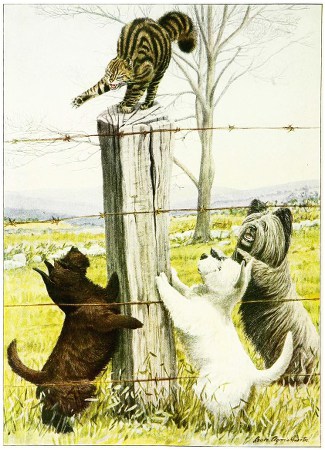
2
The Scottish Terrier has been known by many names, the most common alternative being the “Aberdeen Terrier.” It’s also been referred to as “the Diehard” due to its bravery in hunting badgers, foxes, and other fierce varmints.
3
As a breed, the Scottie has some serious connections. Presidents Franklin D. Roosevelt, Dwight D. Eisenhower, and George W. Bush all owned multiple Scottish Terriers. The most famous of these was FDR’s Fala, who rarely left his side and was immortalized in the Franklin Delano Roosevelt Memorial in Washington, D.C.
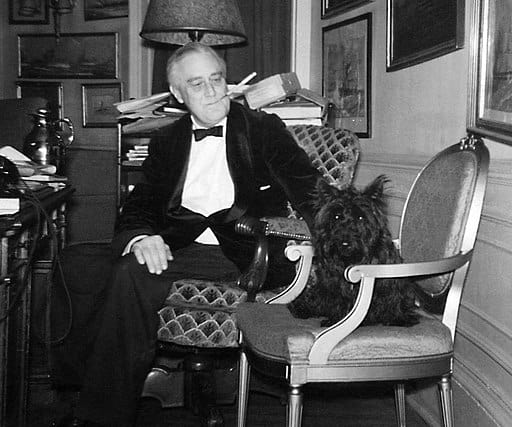
4
The Scottish Terrier may not be as popular as it once was, but it remains a favorite with dog show judges. Scotties have won Best in Show at Westminster nine times – more than any other breed except the Wire Fox Terrier.
5
Scotties are known for their (always fashionable) black coloration. However, the dogs also come in gray, brindle, and even wheaten.
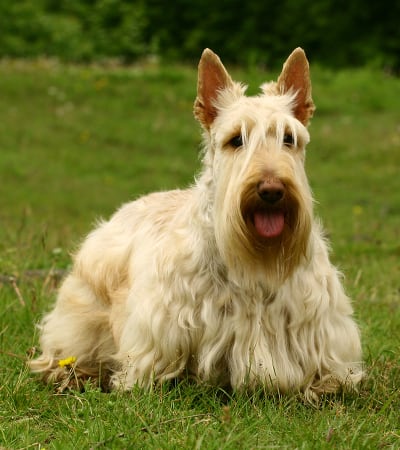
Owning a Scottish Terrier
Scotties can fit in easily in most environments. They do just fine in apartments, and need less exercise than other, more hyper terriers. If they have any problems, it’s usually in getting along with other people or animals.
Here are some things to think about if you’re considering a Scottie:
Grooming. If you want to keep a Scottie in show condition, you’ll need to have its coat regularly hand-stripped. However, most people who own Scotties as pets simply have them clipped. Even then, grooming requirements tend to be on the high side, at least if you want to maintain that classic bearded Scottie style.
Attitude. Scottish Terriers have a mind of their own, which is both an amusing feature of the breed and a potential source of problems. By far the best way to head off troublesome issues is to work with the Scottie when it’s young. In particular, it’s important to get a Scottie puppy used to being handled and restrained.
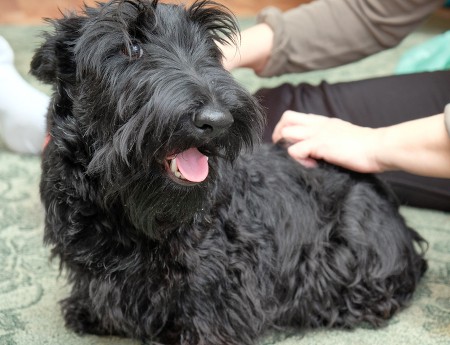
Climate. Scotties adapt well to cooler temps – in fact, many of them love the snow and cold. Warm weather is a different story, however. A black Scottie might not be the best choice for a hot and sunny place like, say, Arizona.
Shedding. Scottish Terriers don’t shed to any great degree, and thus are considered hypoallergenic. To remove loose hair and keep them looking good, regular brushing and grooming are necessary.
If you decide that you want a Scottish Terrier, be sure to do some research and track down a reputable breeder. Depending on where you live, you might have to travel to pick up your new puppy due to the fact that Scottie breeders are not that common.
Adoption is another fine choice. You can find adoptable Scotties through rescue organizations and (more rarely) at dog shelters.
